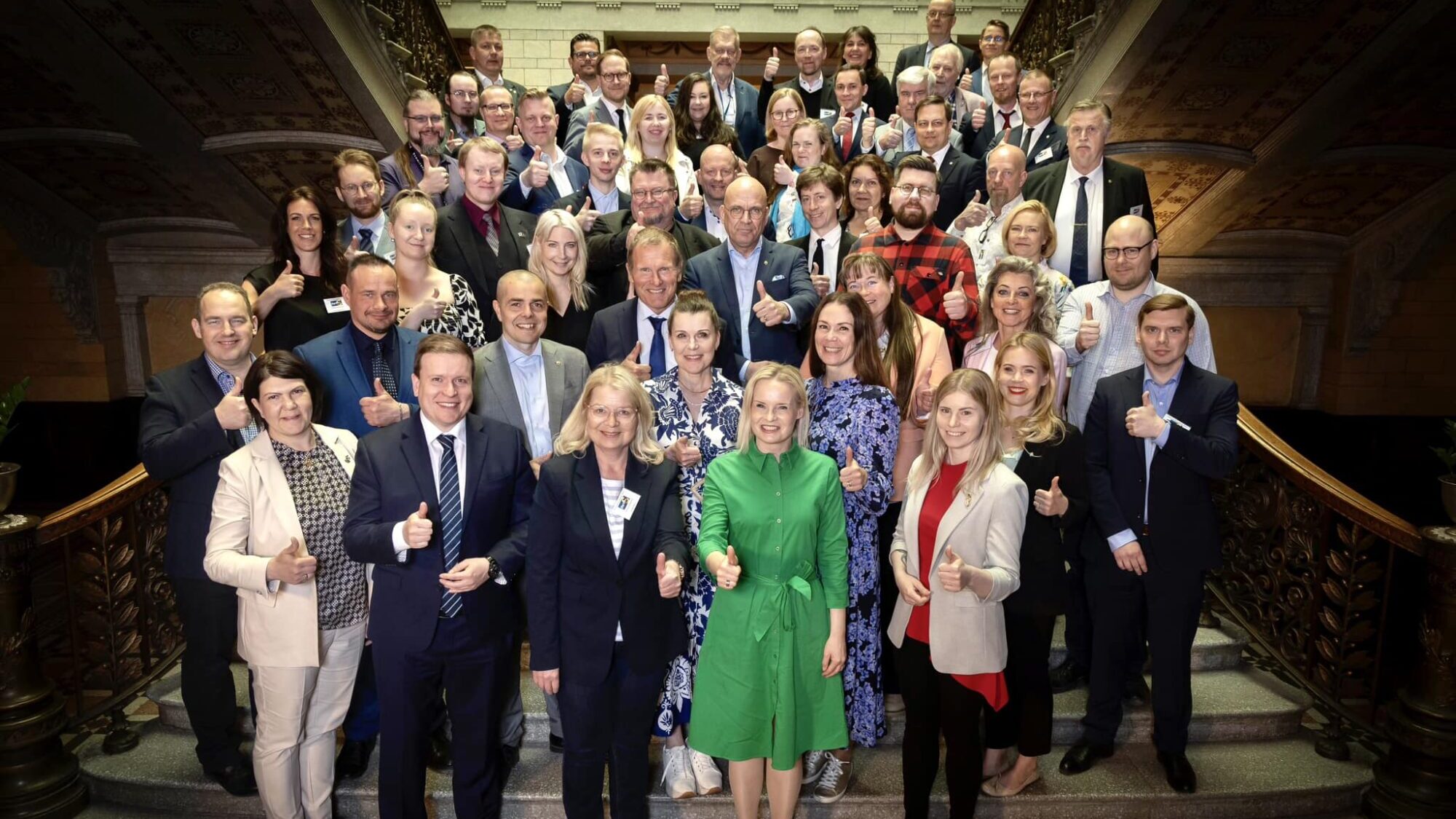
True Finns delegation after three weeks of negotiations.
Photo: Riika Purra / Facebook
Weeks of negotiations in Helsinki concluded Friday morning as the populist Finns Party announced a coalition deal with the centre-right National Coalition Party and two smaller parties to form the next Finnish government.
The deal had been 74 days in the making after the national-conservative Finns Party came second in a tightly fought election that saw defeat for globalist favourite Prime Minister Sanna Marin and her Social Democratic Party on the back of their poor handling of the nation’s finances.
The Finns Party, which was crippled by a 2015 coalition agreement with the Centre Party, now joins the Christian Democrats and Swedish-minority People’s Party as junior partners in a government led by the conservative National Coalition Party.
Results forecast for Finnish general election:
— Populism Updates (@PopulismUpdates) April 2, 2023
– Conservatives would win
– Far-right place second
– Sanna Marin pushed to third
Government formation could be unclear, but given results, ball will be first in the conservatives' court pic.twitter.com/lKZhlelXzV
According to party insiders speaking to The European Conservative, the Finns Party officials had locked horns with People’s Party reps in particular over asylum reforms as the Programme for Government was announced by all four coalition leaders Friday afternoon at a press conference in Helsinki:
The Finns Party achieved numerous immigration goals in the program. For example, the government tightens the criteria for citizenship and cancels permits for the people who are not working anymore. We will make massive cuts for development aid—except funds for Ukraine.
The Finns Party will also have control of seven government ministries and a special influence over immigration matters.
While negotiators were restricted from giving interviews, it is believed that disputes over immigration and green policy were the main stumbling blocks to an agreement. This is the second time the Finnish populists have entered power. For their part in government, the Finns Party secured greater asylum restrictions and a delay in the implementation of some emission targets until 2035.
According to tabloid leaks, the new Programme for Government includes plans for tightening the issuing of residence permits, and an increase in police numbers by 10%.
The exact details of the new Finnish Cabinet will be announced Sunday with Prime Minister-designate Petteri Orpo also announcing six billion in budgetary changes to curtail runaway government spending. The new four-party coalition will have a majority of eight MPs in Finland’s 200-seat parliament.
The Finns Party sharply realigned its foreign policy in the wake of the Russian invasion of Ukraine, dropping all past reservations to Finnish membership of NATO and the country joined the military alliance earlier this year.
The party’s slide towards Atlanticism was the motivating factor in its split from the nationalist ID parliamentary group in favour of the ECR in the European Parliament in April as Finnish officials lamented perceived Russophile tendencies on the populist right in Europe.
The Finns Party emerged from agrarian populism in the 1990s and earned a political foothold through its appeal to blue-collar voters.
The party endured an acrimonious split in 2017 but rebounded to win 43 seats in this year’s parliamentary elections. Similar to the Swedish Democrats, the party has capitalised on a rise in migrant-fueled crime over the past decade to enter the political mainstream as party officials hope that today’s deal could lead to a general lurch right for the country.
Potentially making the same mistake twice by entering coalition as a junior party, the Finns Party’s role in government will be scrutinised across Europe to see how far populists can push the centre right
